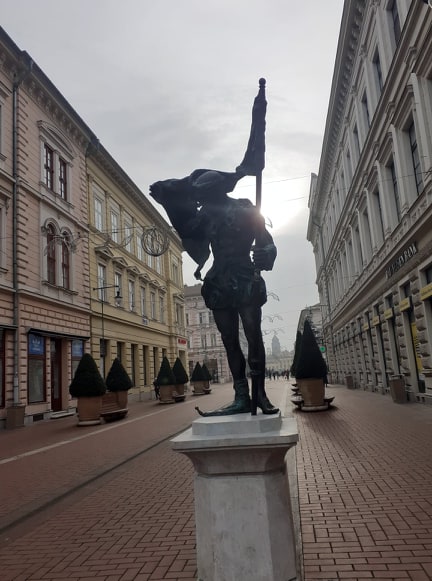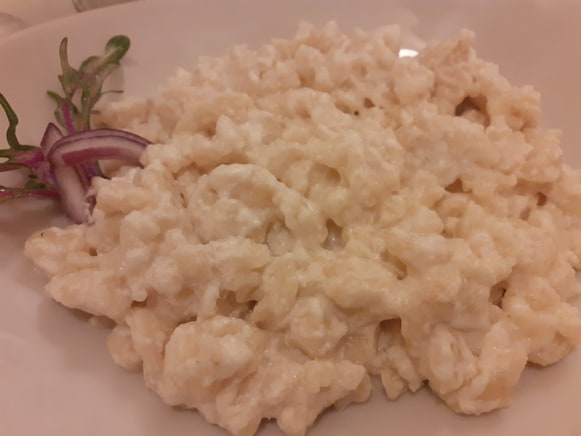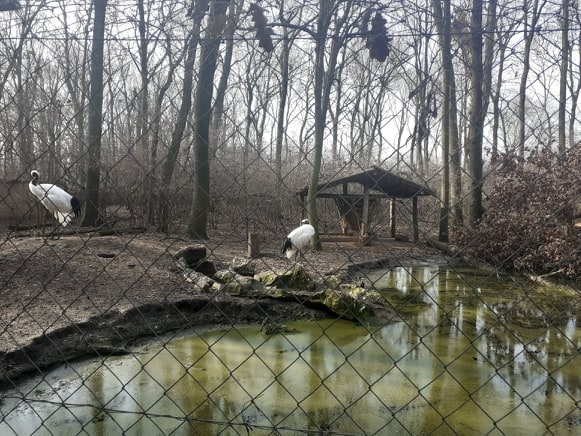Closed to the Romanian border, Szeged is the third largest city of Hungary, the largest city and regional centre of the Southern Great Plain and the county seat of Csongrád county.
At the confluence of the Tisza and Maros/Mureș Rivers, Szeged is a city that was reborn at the end of the 19th century. In 1879 a flood almost wiped Szeged out, leaving only 265 of 5723 houses standing. Somehow the city reborn.
One of the most known attractions is The Szeged Synagogue.It is a 1907 building designed by the Jewish Hungarian architect Lipót Baumhorn, whose work is considered to contain the finest examples of the unique fin de siècle Hungarian blending of Art Nouveau and Historicist styles sometimes known as Magyar style.The interior of the great dome, and all of the building’s stained glass, are the work of the artist Miksa Róth.
The Szeged Synagogue is the second largest in Hungary after the Dohány Street Synagogue in Budapest, and the 4th largest in the world.The dome’s 24 columns symbolise the hours in the day, while the rose flowers symbolise the Revelation.The synagogue has high-grade acoustics and is often used for classical concerts.

Szeged is home to some beautiful outdoor spaces. Dom ter is the city’s most beautiful square, surrounded by iconic buildings such as the Votive Church and Dömötör Tower (the oldest building in Szeged)
Móra Ferenc Múzeum , founded in 1883 and opened in 1896, houses a number of permanent and temporary collections of works relating to natural sciences, art, traditional trades and more. The building itself was constructed in the neoclassical style and is named after Móra Ferenc, who was the museums director . The Neoclassical Palace for Public Education has a regal portico supported by Corinthian columns.The permanent exhibitions deal with natural history and regional culture and crafts, all explained with moving models, multimedia and interactive displays.
The Zoo covers 106 acres and houses over 200 different species. Large enclosures are climate controlled and kept as natural as possible, providing a great environment in which to visit and learn more about the animals who live in the zoo – including a number of endangered species. Educational programs, feeding shows and a petting zoo are just some of the activities to be enjoyed here. Everything is organised geographically so it’s pretty easy to get around, and you can try to time your visit to coincide with the regular feeding sessions.The Quarantine house houses animals and birds recovered from illegal smuggling. Covering about 600 animals through 140 species, exhibits at the zoo include: the wolverine, L’Hoest’s monkey, fossa, Alaotran gentle lemur, bat eared fox, North Chinese leopard, lowland anoa, Chinese water deer, silvery marmoset, red-cheeked gibbon, giant anteater and maned wolf. the lion, slender-tailed meerkat, Bactrian camel and Siberian tiger.

The Votive Church
In 1879, a great flood wiped away many of Szeged’s buildings, wreaking destruction on the city. As a result, the city vowed to create a Catholic Cathedral and in 1913, construction began . The interior of the cathedral is opened to visitors, and its tower can be climbed for stunning panoramic views over Szeged. On a plaza with the same dimensions as St Mark’s Square in Venice, the Votive Church is the fourth largest building in Hungary, with a capacity of 5,000 and towers cresting 91 metres above the square.
Highlights include:
- The Hero’s Bell, which weighs 8600 kg.
- Europe’s third largest pipe organ, with 9040 pipes.
- A statue of the Madonna, 3 metres high.
- Some beautiful art inside the church, not to mention stunning interior decorations.
- The murals on the roof.
Széchenyi Square
This landscaped five-hectare plaza is traced by Eclectic-style mansions and monuments like the City Hall and Hotel Tisza, which was once a magnet for famous writers, composers and poets.
Napfényfürdő Aquapolis
On the left bank of the Tisza is an indoor waterpark and pool complex with slides for youngsters and fitness facilities and thermal treatments for grown-ups . There are 13 slides here, adding up to a kilometre in length.








The city is also known for its famous festivals which begin in March and end somewhere in October. The wine, sausage, fish or beer festival are not to be missed! During them the city becomes quite crowded. Do not forget to try the spicy Hungarian food. It can be found in their traditional restaurants. Make sure it has paprika in it!